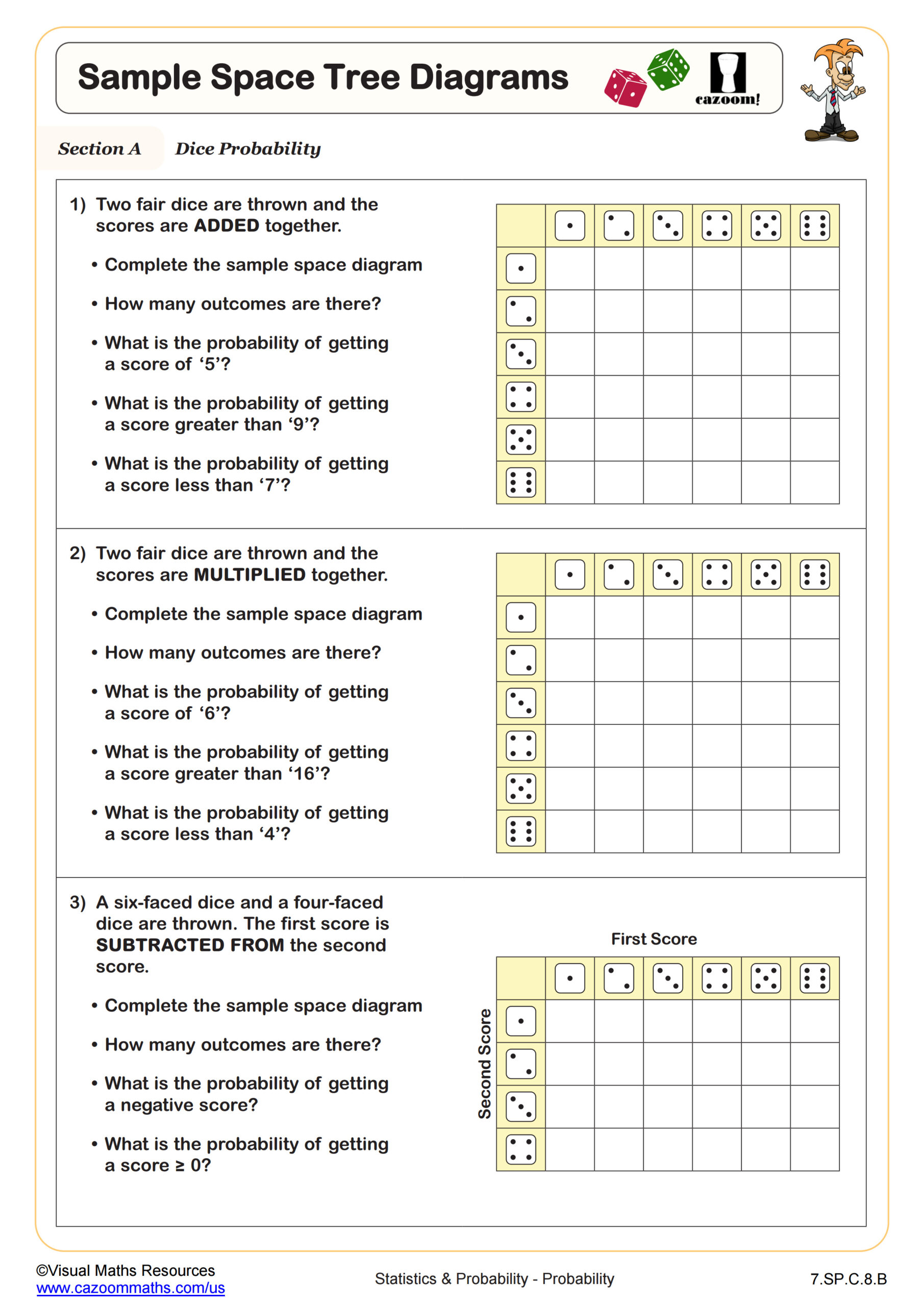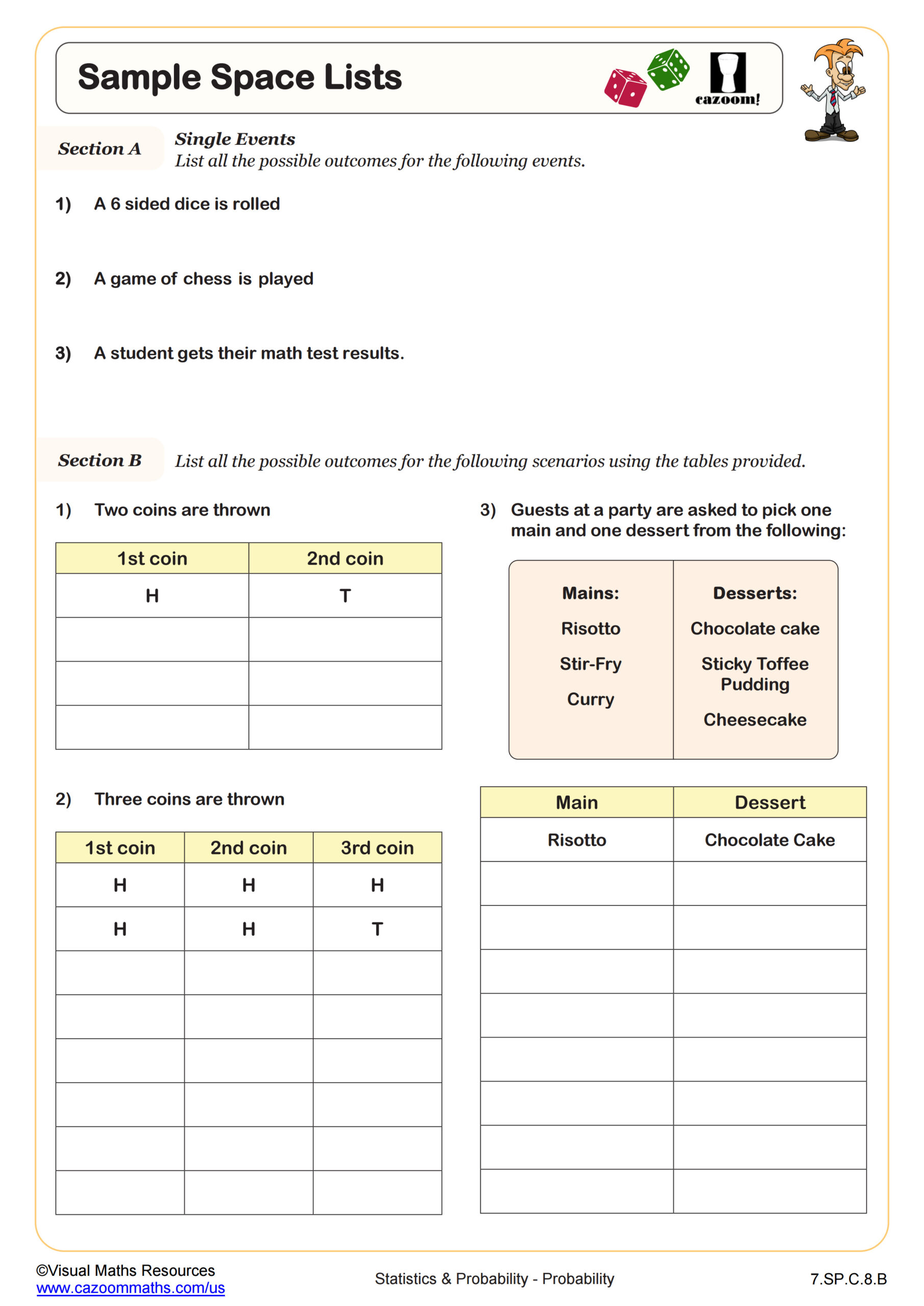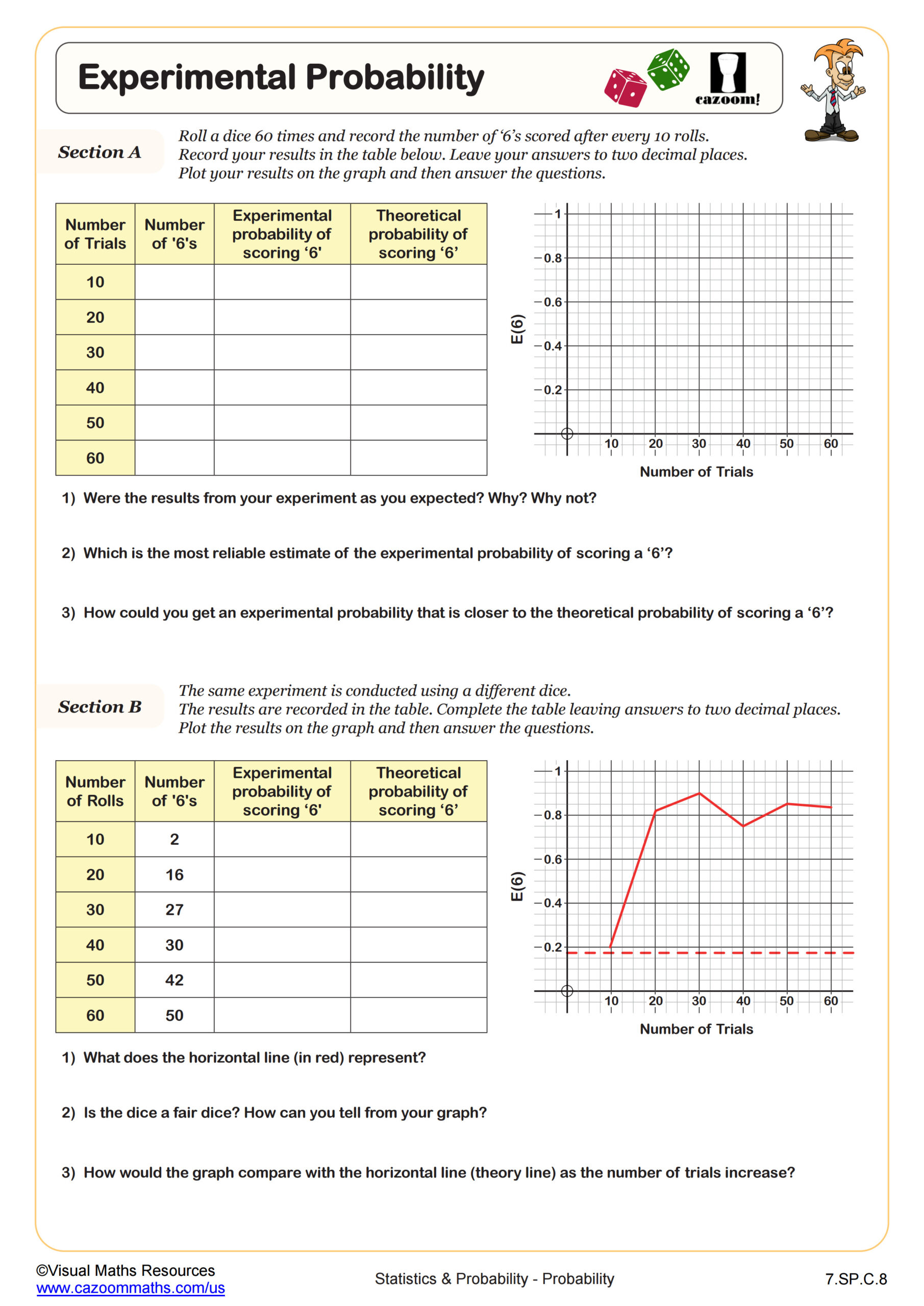Loading...
Back to:
Sample Space Tree Diagrams WORKSHEET
Suitable for Grades: 7th Grade
CCSS: 7.SP.C.8.B
CCSS Description: Find probabilities of compound events using organized lists, tables, tree diagrams, and simulation. a. Understand that, just as with simple events, the probability of a compound event is the fraction of outcomes in the sample space for which the compound event occurs. b. Represent sample spaces for compound events using methods such as organized lists, tables and tree diagrams. For an event described in everyday language (e.g., “rolling double sixes”), identify the outcomes in the sample space which compose the event. c. Design and use a simulation to generate frequencies for compound events. For example, use random digits as a simulation tool to approximate the answer to the question: If 40% of donors have type A blood, what is the probability that it will take at least 4 donors to find one with type A blood?
Sample Space Tree Diagrams WORKSHEET DESCRIPTION
Students will complete sample space diagrams and use them to find probabilities throughout this worksheet.
Section A is based around throwing two dice and the scores being added, multiplied, or subtracted to complete three separate sample space diagrams, all of which are pre drawn for your students. Once the sample space diagrams are complete, students are asked questions regarding the number of outcomes and to find various probabilities.
Section B sees students construct their own sample space diagrams to represent all possible outcomes of multiple events. Events this time include tossing a coin, spinning a spinner, and balls inside two bags.




